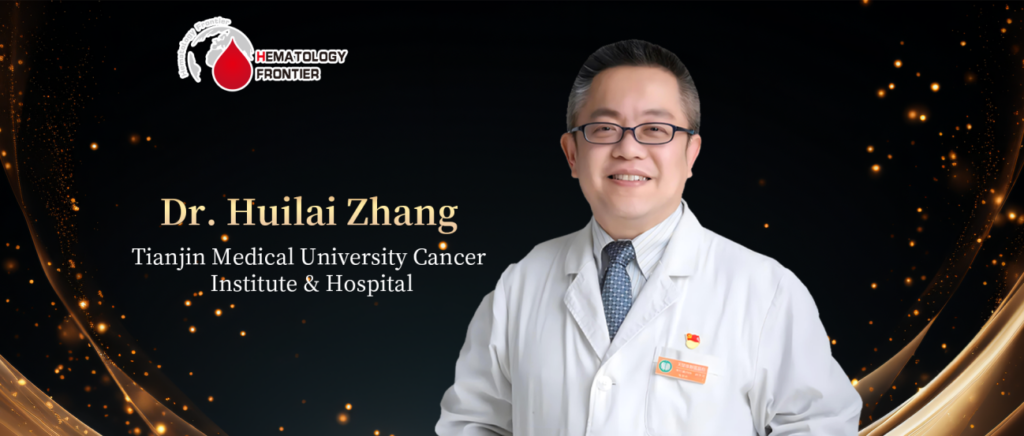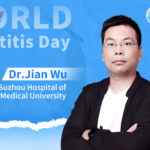
Editor’s Note: Marginal zone lymphoma (MZL), a group of indolent mature B-cell lymphomas, presents a significant challenge in treatment selection due to its high heterogeneity. Despite improvements in survival rates for MZL patients with the advent of new drugs and advancements in clinical diagnostic and therapeutic techniques, developing a balanced management plan that addresses both efficacy and safety across a long disease course and lifetime management remains an urgent issue. At the recent "8th Academic Conference on Hematologic Oncology" organized by the Chinese Society of Clinical Oncology (CSCO), Dr. Huilai Zhang from Tianjin Medical University Cancer Institute & Hospital delivered a compelling presentation titled "Current Status and Treatment Progress for Chinese Patients with Marginal Zone Lymphoma." This report offers valuable insights and forward-looking guidance for comprehensively understanding the current state of MZL diagnosis and treatment in China and mastering the latest developments in the field. This article summarizes the key points of Professor Zhang's presentation for our readers.Key Takeaways
- The median age at diagnosis for MZL patients in China is 59 years, with males accounting for 62%. Among the subtypes, 61% are extranodal, 25% nodal, and 14% splenic.
- There are unmet diagnostic and therapeutic needs in China, including underdiagnosis, fragmented first-visit departments, low awareness of the disease, limited targeted therapies, and high toxicity from traditional treatments.
- With the emergence of new drugs, chemo-free regimens focused on targeted therapies have become a new trend in MZL treatment, offering comparable efficacy and better safety than immunochemotherapy.
- BTK inhibitors have shown promising progress in first-line treatment without chemotherapy, potentially becoming a superior treatment option.
Overview of Marginal Zone Lymphoma (MZL)
Marginal zone lymphoma (MZL) is a common indolent lymphoma, predominantly affecting the elderly, with an increasing incidence rate. MZL mainly includes three subtypes: mucosa-associated lymphoid tissue lymphoma (MALT)/extranodal MZL (EMZL), splenic MZL (SMZL), and nodal MZL (NMZL), with EMZL comprising 60.8% of MZL cases. The etiology, predilection sites, and clinical characteristics of these subtypes vary, making MZL highly heterogeneous. Although the median overall survival (OS) for MZL patients exceeds 10 years, SMZL and NMZL patients have relatively lower survival rates compared to other subtypes. MZL is closely associated with chronic infections and autoimmune diseases.
Progression within 24 months of treatment (POD24) is the strongest predictor of reduced survival in MZL. A multicenter retrospective cohort study in the U.S. analyzed 524 adult MZL patients diagnosed between 2010 and 2020, dividing them into POD24 and non-POD24 groups. The results showed that the 5-year OS rate was 17% lower in the POD24 group compared to the non-POD24 group (75% vs. 92%). Additionally, immunoglobulin (Ig) paraproteinemia is another important factor affecting MZL survival prognosis. A study presented at ASH 2023, which followed 73 MZL patients, found that 20 patients (27.3%) developed Ig paraproteinemia, mostly IgM (45%); these patients had significantly shorter OS (73.8 vs. 178.8 months) and progression-free survival (PFS), with the survival disadvantage being more pronounced in patients with IgM paraproteinemia.
Although MZL generally follows an indolent clinical course, a small percentage of patients experience histologic transformation (HT). Two studies presented at ASH 2023 analyzed this phenomenon. One study reviewed data from 529 MZL patients at the Mayo Clinic, identifying stage III/IV disease, elevated lactate dehydrogenase (LDH), involvement of ≥2 extranodal sites, MALT-IPI scores of 2-3, and SMZL subtype as important predictors of HT in MZL patients. Another study showed that HT is associated with reduced survival rates; among MZL subtypes, SMZL had the highest HT rate (5.4%), followed by NMZL (3.3%) and EMZL (1.4%). The 5-year relative survival (RS) rate after transformation was highest for transformed EMZL (t-EMZL, 61%), followed by transformed NMZL (t-NMZL, 51%) and transformed SMZL (t-SMZL, 46%). Additionally, an April 2024 study published in The Lancet‘s EClinicalMedicine developed an international prognostic index model for MZL (MZL-IPI), confirming that elevated LDH (≥ upper limit of normal), decreased lymphocyte count (<1×10⁹/mmc), anemia (<12 g/dL), decreased platelets (<100×10⁹/mmc), and NMZL or disseminated MZL (dissMZL) are independently associated with PFS in MZL patients.
Current Status of MZL Diagnosis and Treatment in China
Inadequate Diagnostic Accuracy and Limited Targeted Treatment Options
To comprehensively understand the current state of MZL diagnosis and treatment in China, including patient clinical characteristics and diagnostic journeys, analyze the application of existing treatment regimens, and explore the development trends of new drugs and treatment modalities, the CSCO Lymphoma Expert Committee launched the “White Paper on the Current Status of Survival and Clinical Diagnosis and Treatment of Chinese Patients with Marginal Zone Lymphoma” (hereinafter referred to as the White Paper) from January to July 2024. The White Paper covers three main sections: clinical characteristics, treatment application, and follow-up and long-term management.
According to the White Paper’s survey report, the median age of MZL patients in China is 59 years, with males accounting for 62%. Among all subtypes, 61% are extranodal, 25% nodal, and 14% splenic. Patients often have their first visit in a variety of departments, including gastroenterology, general surgery, and respiratory medicine, in addition to lymphoma-related departments. Histopathology is the gold standard for diagnosing MZL, but about 20% of patients do not receive a clear diagnosis at the first visit, correlated with the site of onset. The gastrointestinal tract, spleen, and lungs are the most common sites of misdiagnosis or missed diagnosis, mainly due to atypical symptoms, difficulty in biopsy sampling, and insufficient pathological diagnosis.
In China, an average of 73% of newly diagnosed and treated MZL patients actually receive treatment, with 27% receiving local therapy and 73% receiving systemic therapy. Among patients with localized disease, 45% receive local therapy alone, and 55% receive a combination of targeted therapy or chemotherapy, with high-risk factors at the time of onset being the primary reason for choosing combination therapy. In first-line systemic therapy, regimens including immunochemotherapy, BTK inhibitors alone or in combination, and anti-CD20 therapy alone are applied, with a higher proportion of BTK inhibitors used in specific MZL patients. On average, 35% of patients relapse after local or first-line systemic therapy, with 57% relapsing within two years.
Patient follow-up is primarily conducted through WeChat groups or managed by dedicated doctors, but 49% of patients do not maintain long-term follow-up. The main reasons for loss to follow-up are patients’ perceptions of good health or financial constraints. Overall, there are still many unmet needs in the diagnosis, treatment, and follow-up stages of MZL, including inadequate diagnostic accuracy, high toxicity of immunochemotherapy, poor prognosis in patients with advanced or high-tumor burden, and limited targeted treatment options.

Dr. Huilai Zhang
- Ph.D. in Oncology, Chief Physician, Doctoral Supervisor
- Director, Lymphoma Department, Tianjin Medical University Cancer Institute & Hospital
- Deputy Chairman, Lymphoma Committee, Chinese Anti-Cancer Association
- Standing Committee Member, Lymphoma Expert Committee, Chinese Society of Clinical Oncology (CSCO)
- Member, Lymphoma Group, Chinese Medical Association Oncology Branch
- Deputy Chairman, Oncology Branch, Chinese Medical Promotion Association
- Deputy Chairman, Lymphatic Diseases Committee, Chinese Medical Education Association
- Deputy Chairman, Lymphoma Committee, Chinese Geriatrics Association
- Chairman, Clinical Oncology Chemotherapy Committee, Tianjin Anti-Cancer Association
- Deputy Chairman, Hematology Disease Control Center, Tianjin
- Vice President, Hematology Physicians Branch, Tianjin Medical Association
Professor Zhang’s research focuses on the molecular diagnosis and personalized treatment of malignant lymphomas. He is a recipient of the Tianjin Medical Talent Cultivation Plan and the Tianjin Medical University Clinical Talent Cultivation Plan. He has published over 80 papers as the first or corresponding author in international and domestic journals, including Blood, J Exp Med, JITC, Leukemia, CTM, AJH, Clin Immunol, BJH, Blood Adv, Hematol Oncol, and Int J Cancer. He has received several awards, including the 2023 Science and Technology Progress Award from the Chinese Anti-Cancer Association. Professor Zhang is an editorial board member for several prestigious journals, including Tumor Pharmacology, Chinese Journal of Hematology, Leukemia & Lymphoma, Chinese Journal of Clinical Oncology, Hematological Oncology, Blood Research, and Discover Oncology. He was also awarded the “National Famous Doctor” title in the 4th edition of the award.


